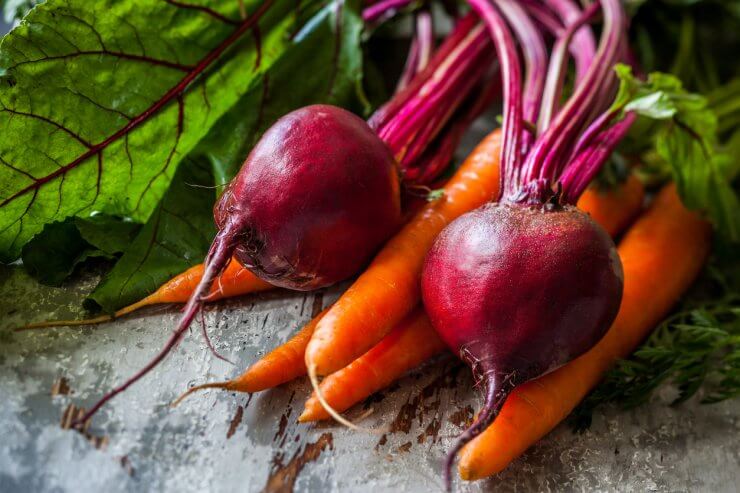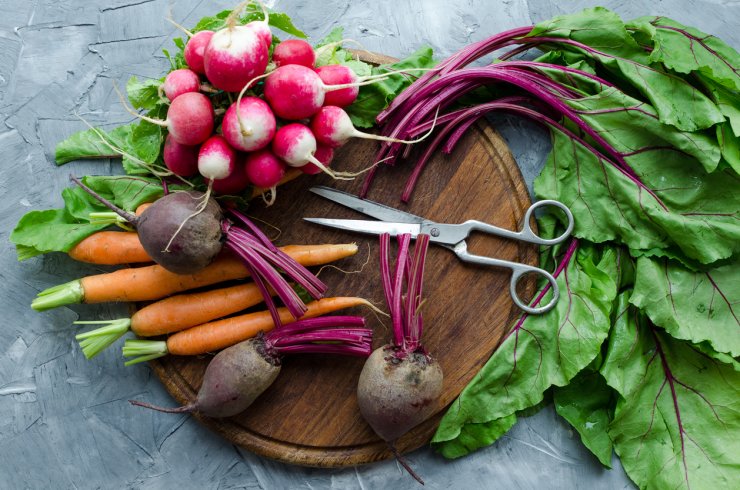
Nice as it would be, we don’t all have space to grow a garden outdoors. Or, even if we do have space, we may live in a cooler climate with a limited growing season. That’s not an end to garden dreams; it just means we may need to be more selective about some of the vegetables we grow, and we might need to move indoors. These indoor gardens usually lean toward lettuces or herbs; we don’t often think about how to grow root vegetables indoors.
For the most part, however, root vegetables are easy enough to grow. Some of them grow quite quickly, as well, leaving less time for things to go wrong. There are some factors you need to consider, though.

How to grow root vegetables successfully all year long
Plants only need a few basics to grow: water, sunlight, fresh air, and soil. Different plants have very different needs around those things, but as long as they get these in the right quantities and without too much pest interference, they will usually grow just fine. For root vegetables, one more factor is the container.
For perhaps obvious reasons, many root vegetables need deep containers. For some, like radishes, you may only need a container that’s 6-8 inches deep. Carrots, on the other hand, will require a pot that’s around 12 inches deep.
The variety has a lot to do with container size, too. So as you’re planning your garden, be sure to match the container to the vegetables you want to grow. Most root vegetables also prefer soil on the looser side, so that’s something to consider as you get your planting mix together.
But when we think about how to grow root vegetables indoors (or any vegetables, really), it’s sunlight that can be most difficult to control. To be perfectly honest, it can be tough to grow vegetables indoors, primarily due to that limited sunlight factor.
For example, in Helena, Montana, in mid-January, the sun rises around 8 a.m. and sets around 5 p.m. In Anchorage, Alaska, you’re looking at five to six hours of sunlight during the winter. And that doesn’t count cloudy days. So at best, and if you have the time to move your plants around the house to catch the best sun, you’re really hard-pressed to give your plants the six or more hours of sunlight they need each day unless you live in higher USDA plant hardiness zones.
It’s not just the timing, either. As sunlight streams through your windows, it gets filtered, so your indoor plants are only getting about half of the sunlight that an outdoor plant would get. This is a huge consideration in determining how to grow root vegetables indoors – especially in the winter.
The solution? There are at least two solutions to this issue. One is to grow root vegetables exclusively in the spring and summer (and possibly fall) if you want to stick with indoor growing.
The other solution is to invest in grow lights. If you only want enough light to grow a small number of plants, you can get away with not spending too much. There are full-spectrum LED grow lights on the market for under $100.
So, where does this leave us in considering how to grow root vegetables indoors? We need:
- The right container. You’ll need a pot that’s a minimum of 6-8 inches deep for shallow-rooted vegetables like radishes and 12+ inches deep for larger root vegetables.
- The right soil. Most root vegetables enjoy looser soil, but as always, check the specifics for the vegetables you want to grow.
- The right water. Not too wet, not too dry.
- Fresh air. Obviously, this is much easier in the summer when you can open your windows, but even in the winter, be sure your plants get a little air circulation and some humidity, either from a humidifier or spritzing them with water.
- Light. Again, easier in the summer. Place them near a south-facing window if you can. In the shorter days of winter, either take a break and plan for spring or use a full-spectrum grow light.
Have you tried growing root vegetables indoors? Any tips you’d like to share?


 Previous
Previous

